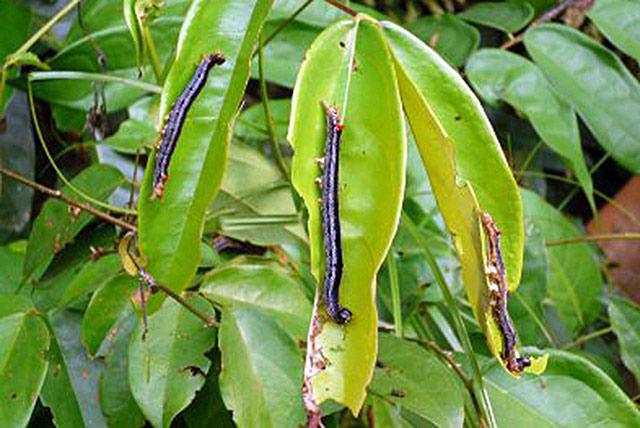Region to meet over fall armyworm


Armyworm
Business Reporter
ZIMBABWE will join its regional counterparts for a meeting planned for next week to map strategies aimed at containing the spread of the fall armyworm pest, which threatens prospects of a good maize harvest for the country and region this season.A fall armyworm outbreak, the first emergence of the pest in Southern Africa, is causing considerable crop damage in some countries.
According to the Food and Agriculture Organisation, maize, a staple food in Zimbabwe and the sub-region has been the most affected, as well as other cereals including sorghum, millet and wheat.
Finance and Economic Development Minister Patrick Chinamasa announced in his 2016 midterm budget that Zimbabwe harvested 511 000t of maize for the 2015 /2016 production year, against a national requirement of 2,2 million tonnes.
Official estimates suggested that the country needed to import about 1,7 million tonnes of maize for both human and animal consumption, a presenting a burden on cash hamstrung Treasury.
But the good rains, which have been incessant of late, were expected to boost crop harvest this year, including the staple maize.
FAO, in partnership with Southern African Development Committee and International Red Locust Control Organization for Central and Southern Africa, is now organising an emergency regional meeting of stakeholders from February 14 to 16 in Harare.
The FAO sub regional coordinator for southern Africa, David Phiri, said that the armyworm situation was constantly evolving.
“The situation remains fluid. Preliminary reports indicate possible presence (of the pest) in Malawi, Mozambique, Namibia, South Africa, Zambia and Zimbabwe.
“Zimbabwe has positively identified the presence of the pest while the rest are expected to release test results soon,” Dr Phiri said on Friday last week.
As such, FAO and its regional counterparts have organised an emergency meeting for stakeholders to shape coordinated action.
Dr Phiri said the region faces serious threats posed by diverse trans-boundary pests and diseases, including varied armyworms, locusts, tomato leaf minor and maize lethal necrosis disease.
In Zambia, the government has already spent $3 million in an attempt to control the armyworm pest that has affected about 130 000 of crop hectarage. However, the full extent of the damage the armyworm has caused in Zimbabwe and other affected countries, is yet to be established.
The Harare meeting will discuss strengthening of surveillance, preparedness and coordinated emergency responses to trans-boundary crop pests and livestock diseases, including the fall armyworm infestation.
It will also discuss control strategies, measures and provide a platform to share experiences and lessons.











Comments